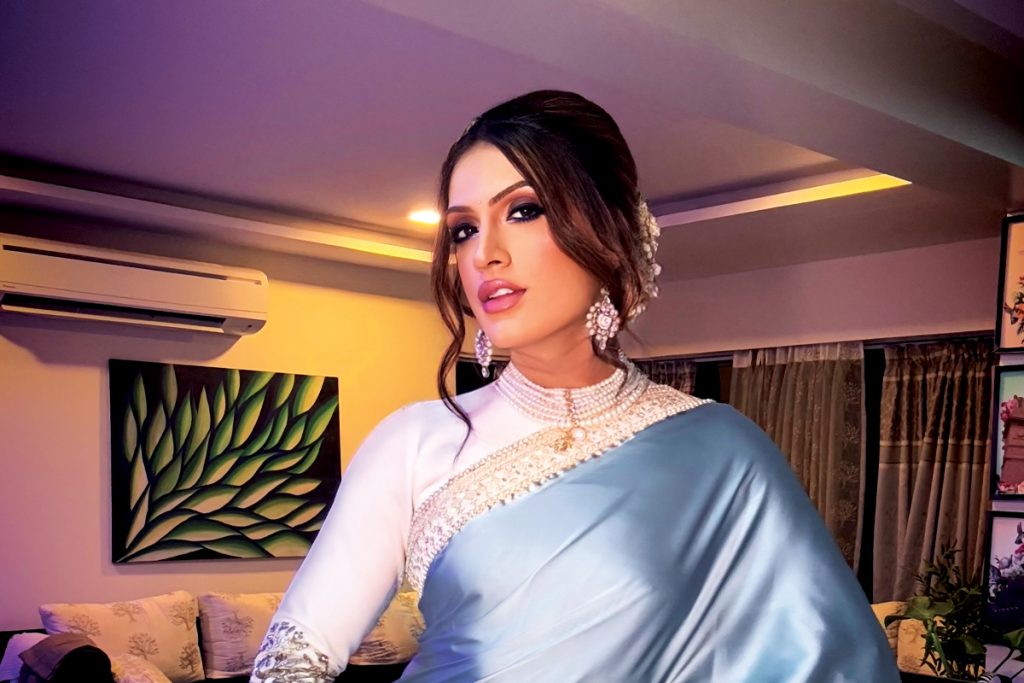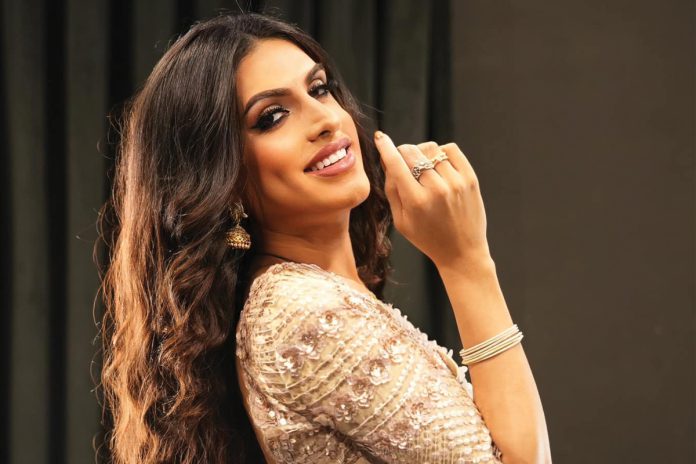From center stage to cultural change— Sushant Divgikr, aka Rani Ko-HE-Nur, owns every space with fearless authenticity.

Sushant Divgikr is more than a name; it is a movement. As Rani Ko-HE-Nur, they have effortlessly blended art, activism, and authenticity, becoming one of India’s most celebrated voices in the LGBTQIA+ community. From winning Mr. Gay India to becoming a global drag icon, their journey has transcended personal success, sparking conversations on identity, representation, and the power of unapologetic self-expression.
In this exclusive interview, Sushant reflects on the defining moments of their career, the cultural significance of drag, and the unwavering spirit that continues to inspire generations.
You have shattered multiple barriers, from winning Mr Gay India to becoming India’s most celebrated drag artist. Looking back, what was the defining moment when you realized that your journey was bigger than just personal achievements—it was about representation and change?
I believe that every conversation I’ve had in about eighteen years has led to change. A lot of people read and consume content on various platforms, so every platform I give my time to is important to me and, therefore, to the entire cause. Initially, when we were younger, we did it for a little more money. It was never about getting paid for me; it was always about putting food on the table, I’ll be very honest. Television, and advertisements.
Later, I realized I was getting more work in the public domain, in the mainstream, on national television. Just by being present and my authentic self, it really mattered to someone watching in a remote town, city, village in India, or even abroad. Before me, there were a couple of people, but it was always caricaturish. I have tried my level best to not be caricaturish. My managers and agencies will tell you—I’ve said no to so many films and shows that portrayed community members in a bad light. It showed us in a demeaning, condescending way—touching people inappropriately, making snide remarks about women’s bodies. It had to stop with someone.
For over a decade, I had quite a good run on television, where I took up work that commanded attention. I was nominated for the Television Award, the Television Academy, and I started getting national and international recognition. I realized this was not just a personal win anymore. It was much larger than that. The footprint I had was in billions. I did some of the biggest shows on television, just being myself.
One person cannot represent an entire community. You cannot be the representative of all Indian women, but you can represent your true, authentic self. That is exactly what I did. I never claimed to represent a community because it’s impossible—there are too many intersections. I always represented my truest, authentic self at that moment. And then I realized this had a much bigger ripple effect than just me thinking about myself and my family.
In a country where conversations around gender and sexuality are still evolving, what has been the most empowering and the most challenging part of embracing both Sushant and Rani Ko-HE-Nur?
I would say that we don’t give enough credit to our own country, culture, and history. We often place Western countries on a pedestal, but India has always been respectful of many genders and orientations. The idea of only two genders came from the West—we have transgender gods, for God’s sake. Anyone embarrassed to talk about sex is more Westernized than me because I embrace my roots. The art of sex and sexuality comes from the Kamasutra, so we should never hold America or any European country as the ultimate benchmark of civilization.
We were put in the closet by colonizers—that is a fact. The laws thrown in our faces today are not ours; they are British-era laws. We need to give credit to our people and culture where it’s due. Everyone learns in textbooks that we were divided by religion, but no one talks about how we were divided by gender. People conveniently claim, This is illegal; this is not our culture, but the Indian transgender community has existed since time immemorial. They have been part of our mythology and culture.
If someone doesn’t know my culture, that’s their problem, not mine. It is up to them whether they want to learn or not. And if they don’t, that’s fine. But I have realized it is not my duty to educate anyone. My right, as a tax-paying citizen of this country, is to have the same rights as my cisgender heterosexual brother—and that is what my parents taught me.
Music has been a major part of your artistic expression. How has your journey as a singer blended with your activism, and do you see art as a catalyst for social change?
Absolutely. I see art as a catalyst for social change only because I’m the living and breathing example of it. You see me going to any stage around the world, and I represent myself in a sari, in Indian attire, or a gown. In anything that I wear, I make sure that I’m rooted in my culture, I’m rooted in my India. And I speak from a place of love. I speak from a place of oneness and unity.
Performance art, or art in general, is one such form of expression that really breaks all of these man-made barriers. Art is understood, or art can be comprehended, by anybody, at any time, and in any form. Art—and in fact, music therapy—is even given to animals, apart from human beings. So, the thing is that we underestimate the power of art, and art has the power to break all these man-made barriers.
The theme of this special edition is Women Who Inspire, and you’ve redefined empowerment in ways that go beyond gender. What does the word ‘empowerment’ mean to you?
For me, empowerment is when I go through emails that I receive, and I see you thriving and flourishing—that makes me go one more day. If my journey can empower someone else to an extent where they want to live up to expectations, I can’t say anything more than that. If your art, your authenticity, and your love for what you do can change the way people reimagine their own lives—to the extent that if they had thought of ending their lives, they would instead choose to continue one more day and believe in themselves—that’s it.
This is my second life. Last year, I almost died in a fire. That’s why I am living such a free and unabashedly unapologetic life. And that, for me, is empowerment—when you can do that for yourself with no ulterior motives.
You are doing what you’re doing simply because that’s what you should be doing. If you live your true and authentic life, it is the most empowering thing you can experience. Live free.


